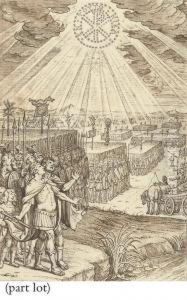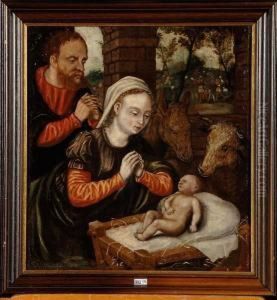Nikolaus Van Der Horst Paintings
Nikolaus van der Horst was a Flemish Baroque painter, born in 1598 in Brussels, then part of the Spanish Netherlands. His contributions to art are primarily noted in the realms of religious and portrait painting, where he brought a unique blend of intense realism and emotional depth. Although not as widely recognized as some of his contemporaries, van der Horst's work remains significant for its detailed approach and the insight it provides into the Baroque period's stylistic evolution.
Educated in the bustling artistic environment of Brussels, van der Horst was heavily influenced by the works of Peter Paul Rubens and Anthony van Dyck. Despite these influences, he developed a distinct style characterized by a more subdued palette and a focused attention to detail, setting his work apart from the more flamboyant approaches of his peers. His religious paintings, often commissioned by local churches, are remarkable for their ability to convey the spiritual fervor of the Counter-Reformation. These works are characterized by dramatic lighting, realistic detail, and a deep sense of piety, reflecting the religious and social tumults of his time.
Van der Horst's portraits reveal his keen eye for detail and psychology. He was adept at capturing the nuances of expression and character, making his portraits highly sought after by the elite of Brussels. His ability to render fabric and texture added a tangible realism to his work, a quality that has been praised by art historians.
Despite his talent and contributions to the Flemish Baroque movement, Nikolaus van der Horst did not achieve the same level of fame as some of his contemporaries. His work, however, has been reassessed by modern scholars, who have recognized his unique contributions to the period's art. Van der Horst died in 1646 in Brussels, leaving behind a body of work that continues to be studied and appreciated for its depth and craftsmanship. Today, his paintings can be found in various museums across Europe, serving as a testament to his skill and vision.

